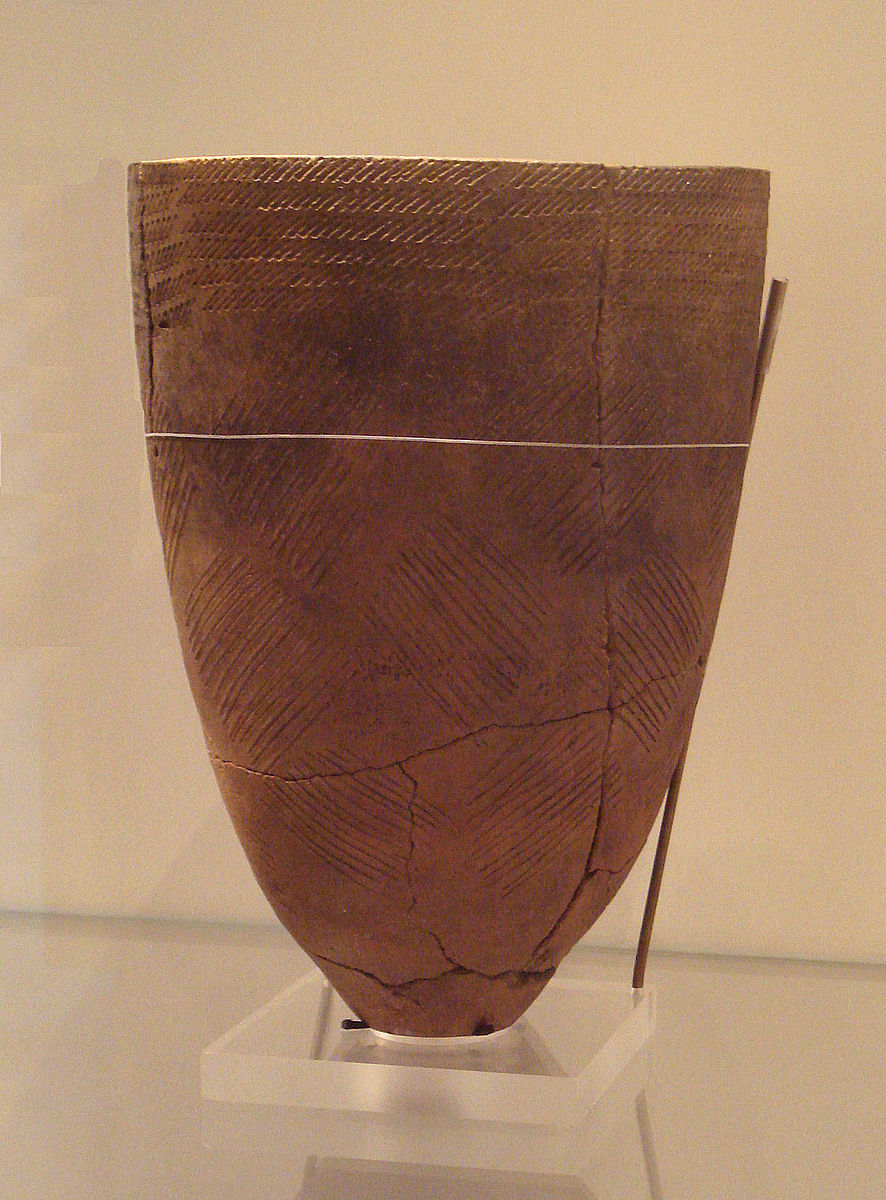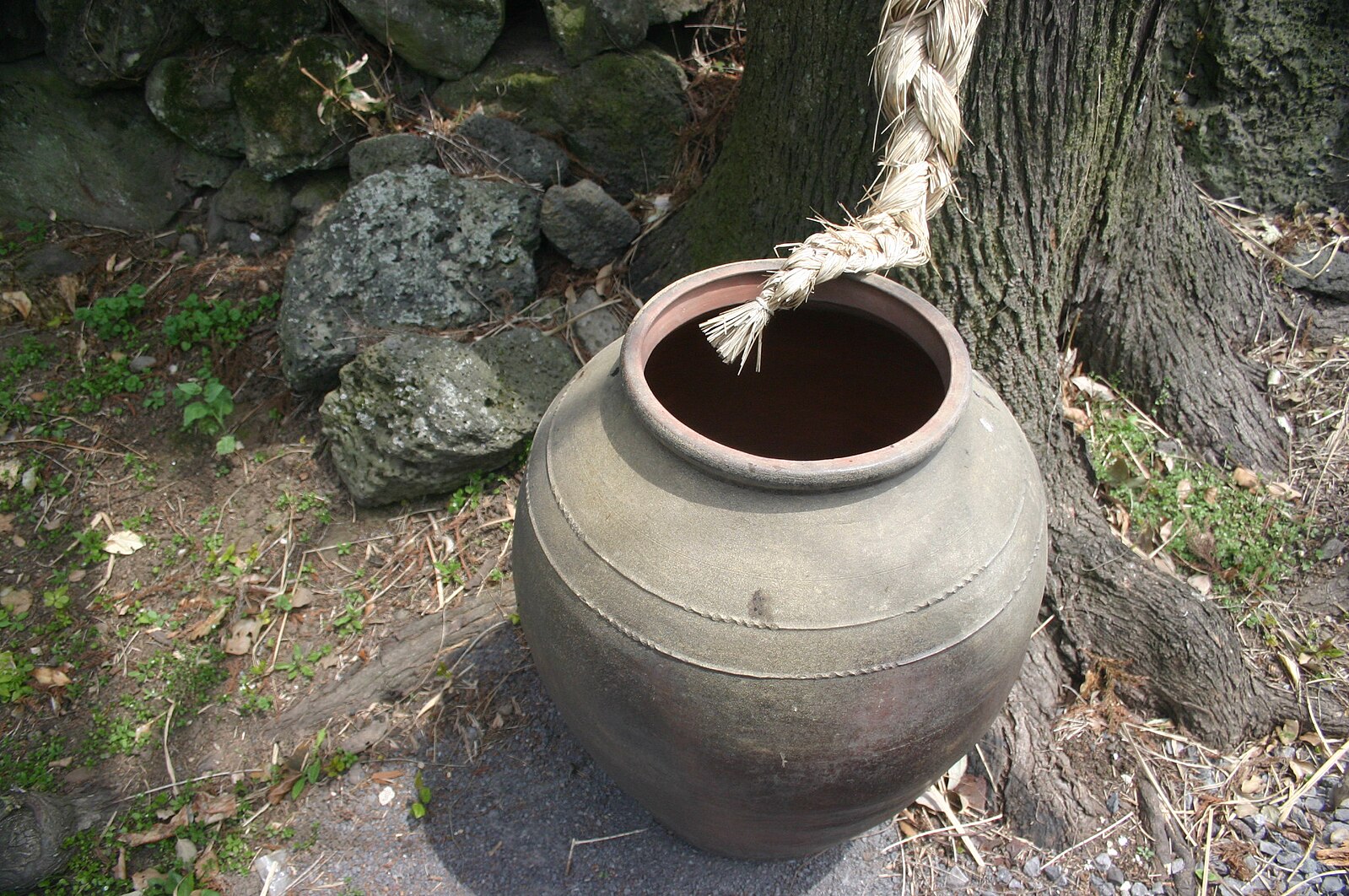2.3: Jeulmun Pottery Period (8,000-1500 BCE)
- Page ID
- 224878
\( \newcommand{\vecs}[1]{\overset { \scriptstyle \rightharpoonup} {\mathbf{#1}} } \)
\( \newcommand{\vecd}[1]{\overset{-\!-\!\rightharpoonup}{\vphantom{a}\smash {#1}}} \)
\( \newcommand{\id}{\mathrm{id}}\) \( \newcommand{\Span}{\mathrm{span}}\)
( \newcommand{\kernel}{\mathrm{null}\,}\) \( \newcommand{\range}{\mathrm{range}\,}\)
\( \newcommand{\RealPart}{\mathrm{Re}}\) \( \newcommand{\ImaginaryPart}{\mathrm{Im}}\)
\( \newcommand{\Argument}{\mathrm{Arg}}\) \( \newcommand{\norm}[1]{\| #1 \|}\)
\( \newcommand{\inner}[2]{\langle #1, #2 \rangle}\)
\( \newcommand{\Span}{\mathrm{span}}\)
\( \newcommand{\id}{\mathrm{id}}\)
\( \newcommand{\Span}{\mathrm{span}}\)
\( \newcommand{\kernel}{\mathrm{null}\,}\)
\( \newcommand{\range}{\mathrm{range}\,}\)
\( \newcommand{\RealPart}{\mathrm{Re}}\)
\( \newcommand{\ImaginaryPart}{\mathrm{Im}}\)
\( \newcommand{\Argument}{\mathrm{Arg}}\)
\( \newcommand{\norm}[1]{\| #1 \|}\)
\( \newcommand{\inner}[2]{\langle #1, #2 \rangle}\)
\( \newcommand{\Span}{\mathrm{span}}\) \( \newcommand{\AA}{\unicode[.8,0]{x212B}}\)
\( \newcommand{\vectorA}[1]{\vec{#1}} % arrow\)
\( \newcommand{\vectorAt}[1]{\vec{\text{#1}}} % arrow\)
\( \newcommand{\vectorB}[1]{\overset { \scriptstyle \rightharpoonup} {\mathbf{#1}} } \)
\( \newcommand{\vectorC}[1]{\textbf{#1}} \)
\( \newcommand{\vectorD}[1]{\overrightarrow{#1}} \)
\( \newcommand{\vectorDt}[1]{\overrightarrow{\text{#1}}} \)
\( \newcommand{\vectE}[1]{\overset{-\!-\!\rightharpoonup}{\vphantom{a}\smash{\mathbf {#1}}}} \)
\( \newcommand{\vecs}[1]{\overset { \scriptstyle \rightharpoonup} {\mathbf{#1}} } \)
\( \newcommand{\vecd}[1]{\overset{-\!-\!\rightharpoonup}{\vphantom{a}\smash {#1}}} \)
Introduction
Decorated pottery defined the name, Jeulmun pottery period. The people living the Southern region of Korea (2.3.1) still maintained the characteristics of hunter-gathers with only small-scale agriculture. Most of the people fished, hunted, and grew a limited number of food products. Multiple settlements did not appear until 3500-2000 BCE. The people began to grow a small amount of millet and rice that was introduced from China. Cultivation at the time only supplemented the major food sources of hunting, fishing, and gathering. In the later part of the period, around 1500 BCE, some areas began to burn some of the fields to extend plant cultivation. The piles of midden filled with shells were relatively small indicating a smaller static population. Excavation of one site on the west coast of Korea allowed archaeologists for understand how Siberian and Japanese culture influenced Korea at the time.

Architecture
In the Amsa-dong archaeological site, remnants of ancient pit houses (2.3.2) have been found, shedding light on the living conditions of the people during that era. These houses were built by digging pits into the earth and adding wooden posts to support thatched roofs. Rectangular in shape, they could measure up to 2.3 meters in width and 2 meters in length. The pit houses served as the sole source of shelter for the inhabitants and provided protection from the harsh elements. To ensure safety from intruders, a small tunnel entrance was carved out from the side of the pit house, leading to a storage or living space. The villages that housed these pit houses were relatively small, suggesting that the population was likely transient and frequently on the move. Perhaps they were searching for better resources or following seasonal changes. The discovery of these pit houses provides valuable insight into the unique way of home construction and the lives of the people who inhabited Amsa-dong.

Art
Jeulmun pottery display cord-wrapping patterns similar to those found in Japan, comb-patterning or other specific decorations. Jeulmun pottery is usually a circle or oval and decorated with lines or zigzags. The most popular pattern was the comb-pattern (bitsalmunui togi) style. Some of the vessels also had geometric patterns covering the whole vessel. The pot (2.3.3) has a simple “V” shape, wide mouth, and narrow base. Even lines around the top indicated the use of the comb pattern. The vessel was made by attaching strips of clay and shaping and forming the surface.

Onggi pottery (2.3.4) in Korea originated around 4000 to 5000 BCE. The pottery is made with clay and very fine sand. The pottery may have red or black tones based on the iron content found in the clay. The pottery may be unglazed and fired at a lower temperature of 600 to 700 degrees or covered with a dark brown glaze and fired at a hotter temperature of 1100 degrees. The pottery was used for storage of rice, fish, or liquids of oil, soy sauce or even water. The clay and techniques used to create the onggi makes the vessel microporous. The onggi was perfect to make and store some of Korean fermented foods. Although onggi pottery is only made by a few people today, in ancient times, it was a common pottery style for tableware and storage. The shape and design of the pottery was defined by the local region. The glaze prevented leakage while allowing the pot to breath. The concept was known as “onggi breathing.”

For centuries, Koreans have been using onggi to store and ferment foods. Jin-gyu Heo is the youngest of the 20 remaining master potters who make these earthenware pots. We visited Jin-gyu's workshop, in Ulsan, South Korea, to see how this ancient craft is still standing.


